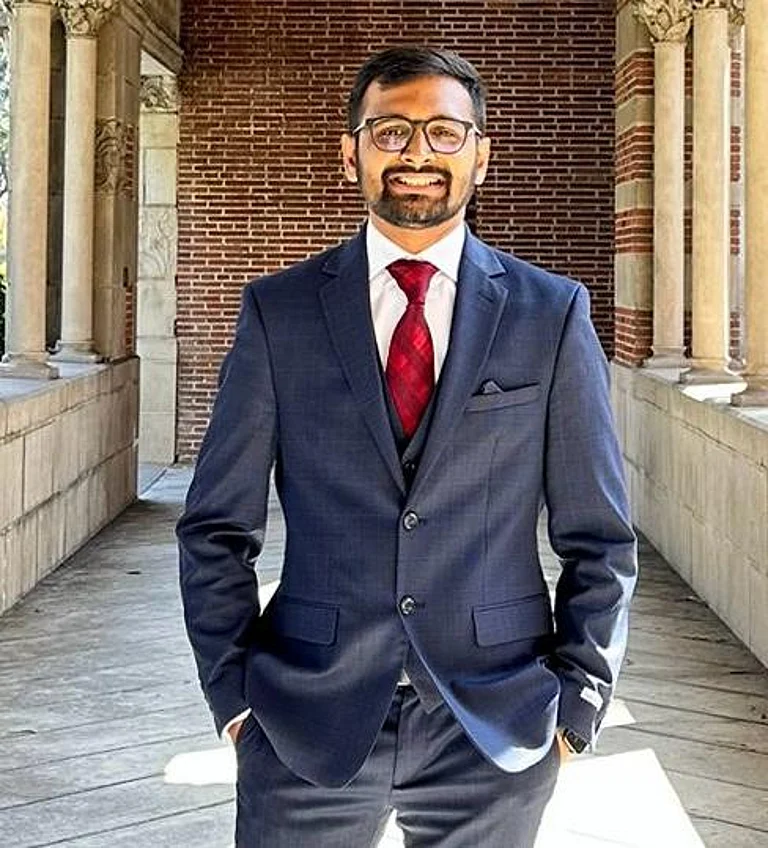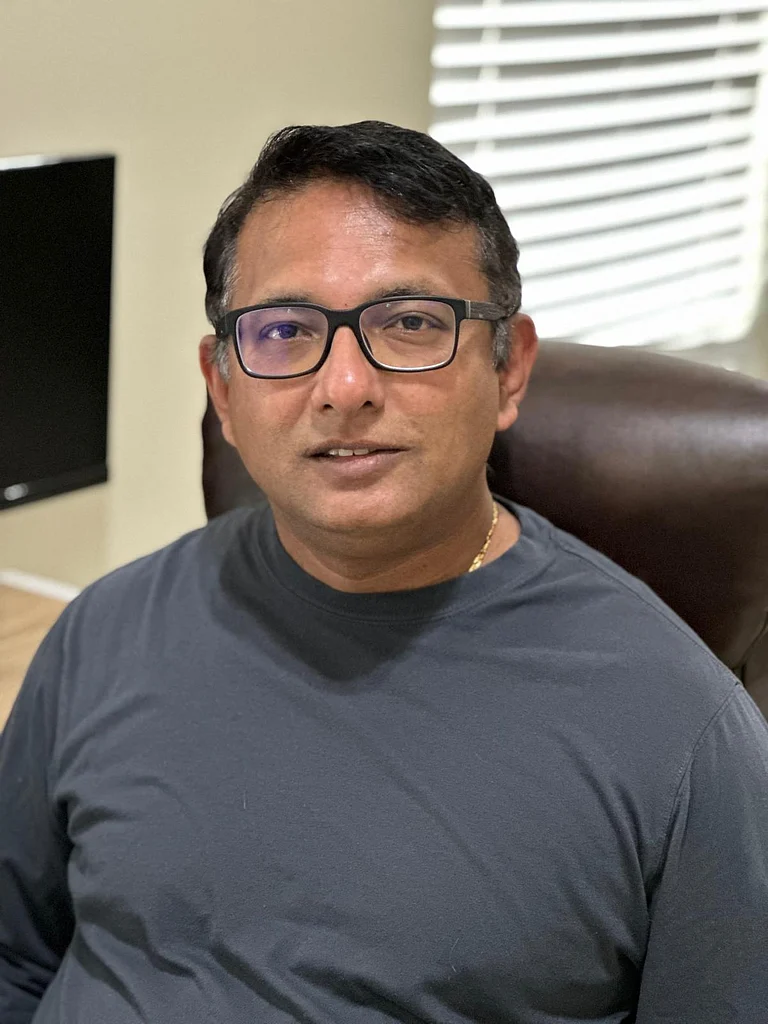In today’s fast-evolving semiconductor landscape, where system complexity is measured in billions of transistors and every nanosecond can determine a product’s viability, Sri Harsha Grandhi aims to redefine the possibilities of silicon design. Rather than focusing on increasing chip speed, he aims to develop intelligent, adaptive hardware systems that withstand challenging environment, deliver long-term reliability, and operate seamlessly across billions of cycles. This mindset reflects a broader industry shift from isolated performance improvements to resilient, system-level solutions that connect simulation accuracy with real-world functionality.
With over eight years of experience in the semiconductor industry, he has contributed significantly to innovations in 3D NAND memory systems. As a Mixed-Signal and Analog Design Engineer, he plays a key role in driving product success from concept to silicon, contributing across both pre-silicon design and post-silicon validation phases. His expertise includes high-speed data path architecture, IO system design, signal processing, embedded system integration, and VLSI engineering. By optimizing key design parameters such as timing, power, and scalability, his contributions have supported the advancement of multiple generations of high-performance, energy-efficient memory products used in today’s most demanding applications.
“I’ve always believed that robust system design starts at the circuit level but it doesn’t stop there,” Grandhi notes. “The real impact happens when we can connect what we simulate with what we measure in silicon and use that to drive meaningful innovation.”
At the core of his engineering role, he designs and simulates high-performance data path systems tailored for complex hierarchical memory architectures. His day-to-day work involves fine-tuning designs to optimize timing precision, power efficiency, and leakage control, ensuring seamless read/write operations under real-world workloads. He develops and applies advanced RTL vectors, SystemVerilog Assertions (SVA), and XA simulations to validate functionality and uphold critical timing margins. One of his innovations is a custom optimization-based methodology for ONFI AC specification validation, which has boosted simulation accuracy and design predictability, streamlining development cycles and reducing silicon risk.
Beyond his expertise in digital data path design, he has engineered high-speed serializers and transmitter circuits operating across data rates from 1.2GT/s to 4GT/s. These designs integrate advanced clock distribution networks and duty-cycle correction circuits, ensuring signal integrity and stable performance even under process variation, device aging, and extreme corner conditions. These architectures play a key role in enabling robust and high-throughput memory read/write operations that power advanced semiconductor applications.
He has played a key role in driving multiple successful product tape-outs, where he has overseen layout team coordination, established power and signal integrity planning, and ensured strict adherence to IR drop limits and long-term reliability constraints. In the post-silicon phase, he plays a key role in debugging silicon issues, collaborating closely with product and validation teams to perform root cause analysis and implement design enhancements for future chip steppings.
A core pillar of his role is leading simulation-to-silicon correlation for high-speed data path IO configurations—an area critical to achieving design accuracy and first-silicon success. He has architected multi-phase, multi-ratio serializer circuits that support scalable performance, while also developing automation frameworks that accelerate data path simulation, verification, and performance extraction. His pre-tapeout responsibilities span AC/DC spec simulations, IBIS model generation, and comprehensive reliability assessments, all contributing to robust designs that meet stringent specifications from the very first silicon pass.
To date, he has authored over 42 peer-reviewed publications across a wide spectrum of advanced domains, including VLSI, signal processing, embedded systems, wireless communication, 5G/6G technologies, the Internet of Things (IoT), Internet of Vehicles (IoV), UAV systems, and power electronics. This body of work reflects both his deep technical expertise and his consistent focus on fostering cross-disciplinary innovation that bridges hardware, systems, and intelligent connectivity.
His contributions extend across several next-generation technology domains, where his hardware designs serve as foundational enablers for intelligent, connected systems. He develops specialized silicon solutions for IoT applications in healthcare, transportation, and industrial environments, focusing on real-time responsiveness, reliability, and energy efficiency. He also incorporates advanced AI/ML models—such as CNNs, LSTMs, and GANs—into circuit validation and anomaly detection frameworks, significantly improving simulation accuracy and reducing verification time. His data path and IO architectures further support robotics and automation within cloud-based manufacturing systems and rehabilitation technologies, enabling adaptive, real-time hardware performance for complex, data-driven environments.
With a strong foundation in signal processing, he has developed expertise in applying wavelet transforms and implementing event detection algorithms on microcontroller-based systems. This skillset allows him to create embedded solutions that are both resource-efficient and optimized for timing-critical applications. His hardware designs are also closely aligned with the latest 5G and 6G wireless communication standards, facilitating the creation of high-speed, reliable connectivity for applications in smart infrastructure, edge computing, and autonomous technologies.
He has made significant contributions to enhancing silicon reliability and efficiency, including the development of ZQ calibration systems and NBTI aging protection circuits—both vital for sustaining performance over a product’s lifetime. He has also led the creation of scalable automation solutions designed to adapt to changing process design kits (PDKs) and simulation tools. His innovative architectural approaches ensure seamless alignment between system-level goals and transistor-level design, enabling faster, more reliable hardware development across generations.
He emphasizes that simulation-to-silicon correlation is more than just about aligning numerical results, it's about comprehending the intricate behavior of circuits under stress, process variations, and aging effects. His ongoing work in duty-cycle correction and the development of reliability-driven design architectures contributes to improved signal integrity, particularly as IO speeds increase in advanced semiconductor systems.
Looking ahead, he anticipates significant advancements at the intersection of VLSI design, embedded systems, and wireless communication, where the integration of these domains will enable the creation of adaptive hardware platforms capable of powering innovations in real-time edge computing, autonomous navigation, and other emerging technologies. He believes that power electronics, AI-driven design approaches, and tight hardware-software integration will play a key role in determining how future systems scale efficiently and respond to increasing performance and complexity requirements.
He is also dedicated to mentorship and collaborative research, believing that true innovation extends beyond technical achievement.
“Innovation isn’t just about solving problems — it’s about cultivating a culture of curiosity, integrity, and lasting impact,” he emphasizes.
In an industry characterized by speed, complexity, and the need for resilience, he aims to exemplify a new standard of engineering leadership—technically proficient, forward-thinking, and deeply aligned with the systems he helps to develop. His work is focused on advancing the next generation of silicon and on supporting the people and possibilities that will define its future.
About Sri Harsha Grandhi
Sri Harsha Grandhi is an experienced Mixed-Signal and Analog Design Engineer with over seven years in the semiconductor industry. His expertise includes high-speed data path architecture, IO system design, and end-to-end silicon validation from pre-silicon modeling to post-silicon debugging. He has authored more than 50 peer-reviewed publications across areas such as VLSI, signal processing, embedded systems, and adaptive hardware platforms. Committed to cross-disciplinary innovation, he is passionate about mentorship and advancing the development of intelligent, reliable, and future-ready electronic systems.


























